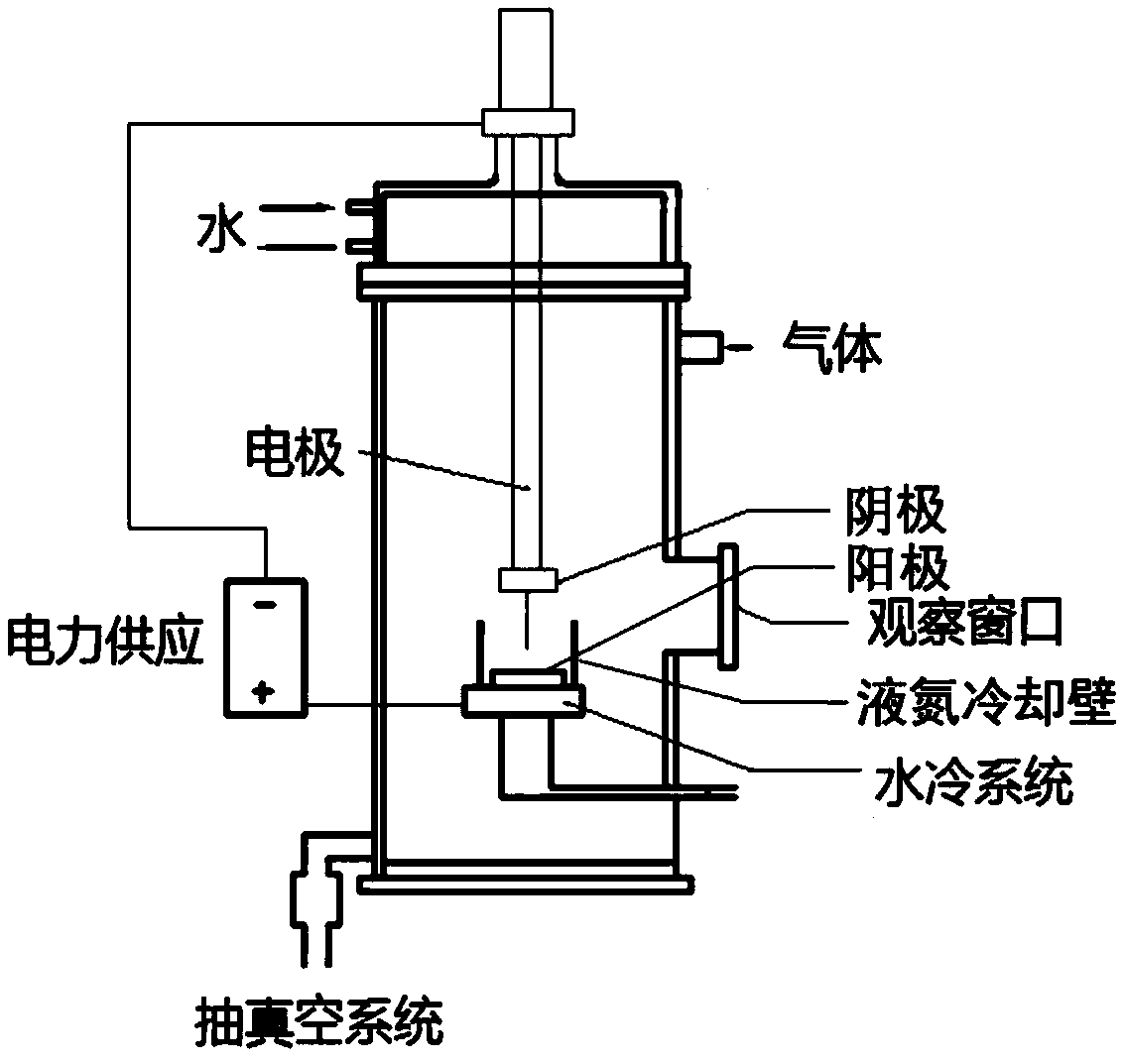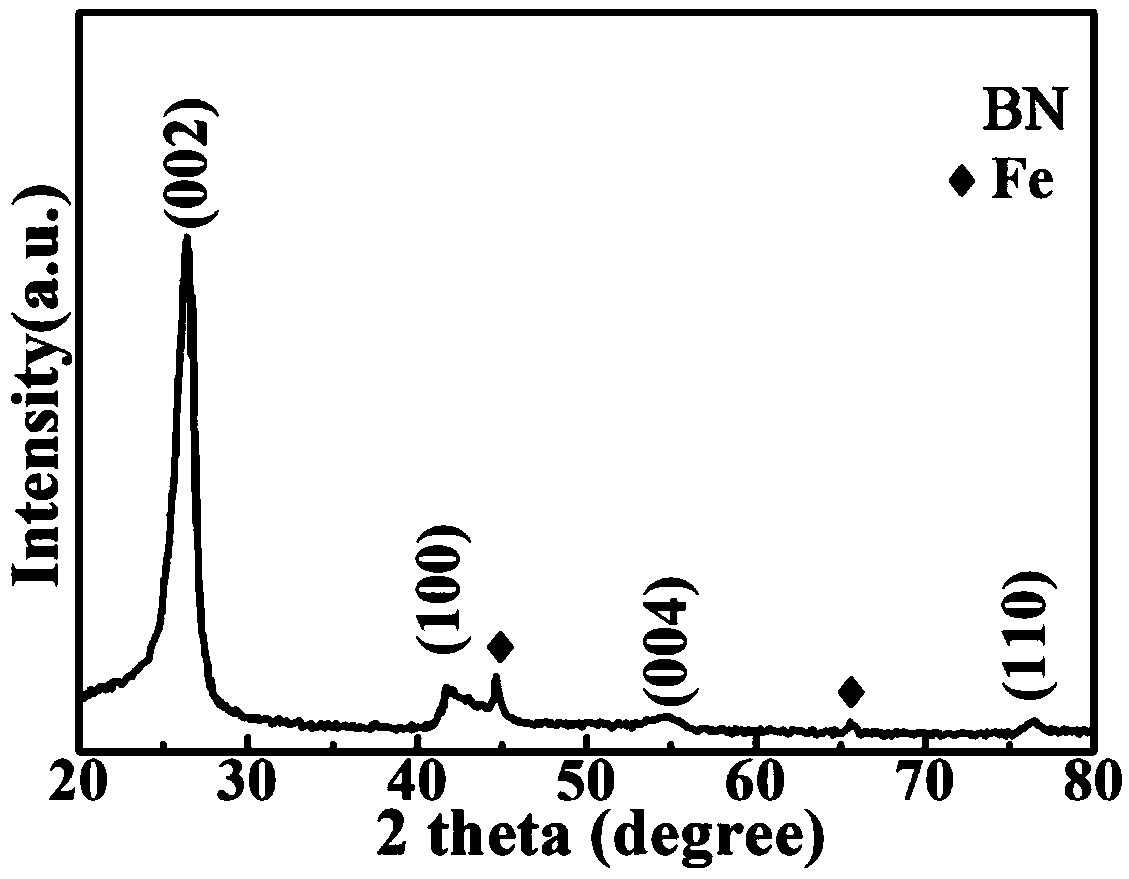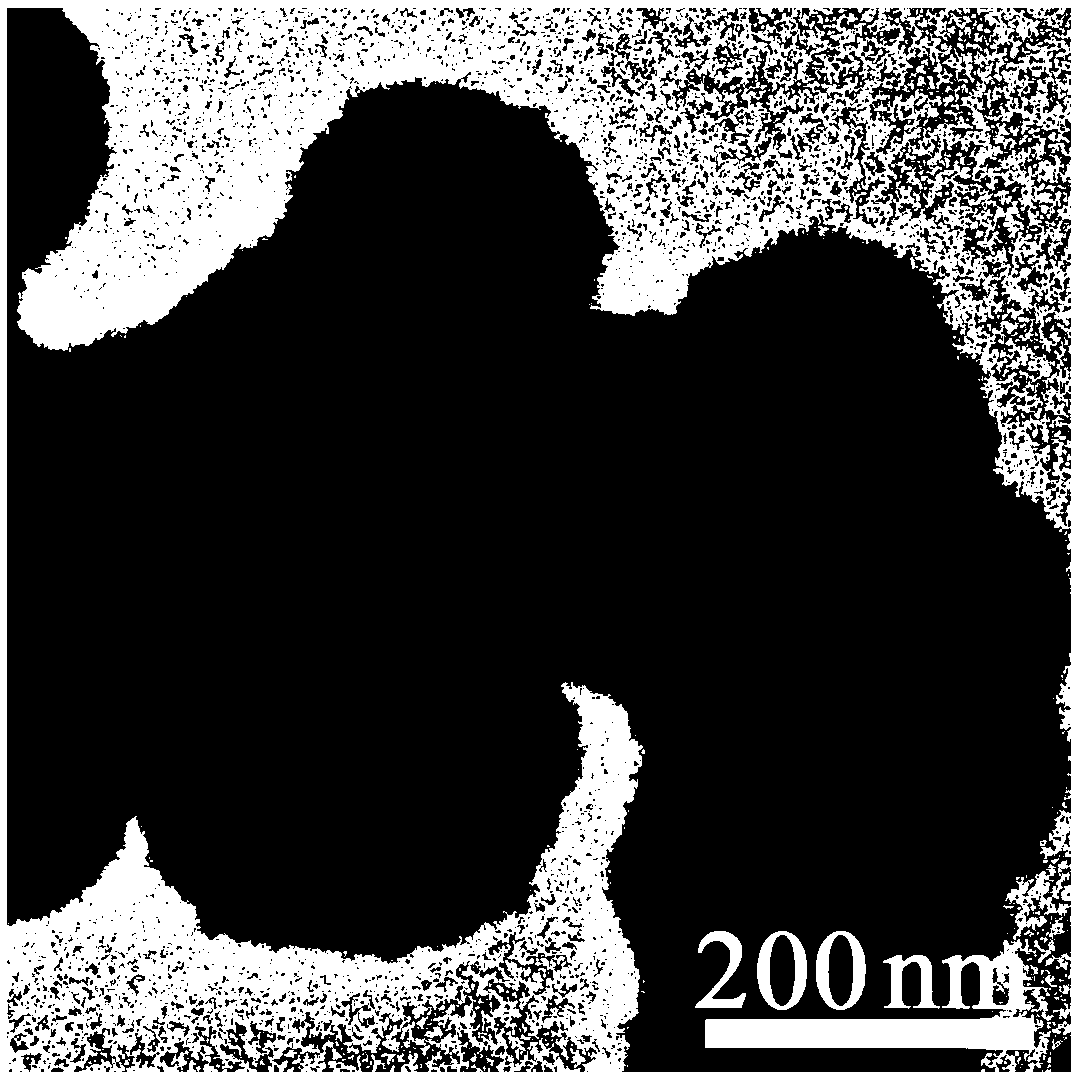Fe nanometer dot @ BN nanospherecompound and preparation method and application thereof
A technology of nano dots and nano spheres, which is applied in nanotechnology, nanotechnology, nanotechnology for materials and surface science, etc., to achieve the effects of easy control, excellent electromagnetic absorption capacity, and simple preparation process conditions
- Summary
- Abstract
- Description
- Claims
- Application Information
AI Technical Summary
Problems solved by technology
Method used
Image
Examples
Embodiment 1
[0037] will figure 1 The device shown is opened and tungsten is used as the cathode. The anode target material consumed is a block made of pure iron powder and boron powder (mass ratio 10:90), which is placed on a cooling water platform. Keep a distance of 30 mm between the cathode tungsten electrode and the anode target iron-boron powder block. During the whole process, the furnace body and anode placement platform are cooled by passing water. Place a liquid nitrogen cooling wall around the anode platform, and maintain a distance of 10 cm between the liquid nitrogen cooling wall and the anode target. After the entire working chamber is evacuated by the vacuum system, argon and nitrogen are introduced. The partial pressure of argon is 0.5 MPa and the partial pressure of nitrogen is 3.0 MPa. The DC power supply is connected and the voltage is 40 V. During the arc discharge process, the operating current and voltage are adjusted to be relatively stable. The Fe nanodot@BN nanosp...
Embodiment 2
[0039] will figure 1 The device shown is opened and tungsten is used as the cathode. The anode target material consumed is a block of pure iron powder and boron powder (mass ratio 20:80), which is placed on a cooling water platform. Keep a distance of 2 mm between the cathode tungsten electrode and the anode target iron-boron powder block. During the whole process, the furnace body and anode placement platform are cooled by passing water. Place a liquid nitrogen cooling wall around the anode platform, and keep a distance of 5 cm between the liquid nitrogen cooling wall and the anode target. After the entire working chamber is evacuated by the vacuum system, argon and nitrogen are introduced. The partial pressure of argon is 0.01 MPa and the partial pressure of nitrogen is 0.1 MPa. The DC power supply is connected and the voltage is 10 V. During the arc discharge process, the operating current and voltage are adjusted to be relatively stable. The Fe nanodot@BN nanosphere compo...
Embodiment 3
[0041] will figure 1 The shown device is opened and tungsten is used as the cathode. The anode target material consumed is a block of pure iron powder and boron powder (mass ratio 15:85), which is placed on a cooling water platform. Keep a distance of 10 mm between the cathode tungsten electrode and the anode target iron-boron powder block. During the whole process, the furnace body and anode placement platform are cooled by passing water. Place a liquid nitrogen cooling wall around the anode platform, and keep a distance of 7 cm between the liquid nitrogen cooling wall and the anode target. After the entire working chamber is evacuated by the vacuum system, argon and nitrogen are introduced. The partial pressure of argon is 0.1 MPa and the partial pressure of nitrogen is 1.0 MPa. The DC power supply is connected and the voltage is 20 V. During the arc discharge process, the operating current and voltage are adjusted to be relatively stable. The Fe nanodot@BN nanosphere compo...
PUM
| Property | Measurement | Unit |
|---|---|---|
| Diameter | aaaaa | aaaaa |
| Diameter | aaaaa | aaaaa |
Abstract
Description
Claims
Application Information
 Login to View More
Login to View More - R&D
- Intellectual Property
- Life Sciences
- Materials
- Tech Scout
- Unparalleled Data Quality
- Higher Quality Content
- 60% Fewer Hallucinations
Browse by: Latest US Patents, China's latest patents, Technical Efficacy Thesaurus, Application Domain, Technology Topic, Popular Technical Reports.
© 2025 PatSnap. All rights reserved.Legal|Privacy policy|Modern Slavery Act Transparency Statement|Sitemap|About US| Contact US: help@patsnap.com



